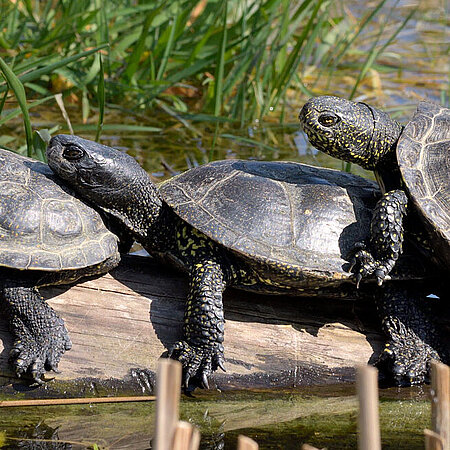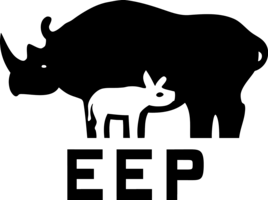European pond turtle
Emys orbicularis

- FamilyNew World pond turtles (Emydidae)
- Weight400 – 700 g
- HabitatFresh and brackish waters
Cold-blooded omnivore
European pond turtles feed primarily on animal matter such as aquatic insects, small fi sh, tadpoles and amphibians. Their diet also includes aquatic plants. They are coldblooded animals and therefore unable to regulate their body temperature. Instead, they spend most of the day in the sun to warm up.

Motionless in winter
As the winter sets in, and food becomes scarce, European pond turtles enter into a state of hibernation. They bury themselves in the mud at the bottom of a pond where they remain without eating by lowering their breathing rate. If an embryo inside an egg is caught in a cold snap, it will only hatch when better weather conditions return. The temperature during the breeding season also has another important function: it determines the sex of the hatchling.
The destruction of the European pond turtle’s habitat has pushed the species to near-extinction in Germany.
Distribution


Hellabrunn Zoo participates in the European Endangered Species Programmes